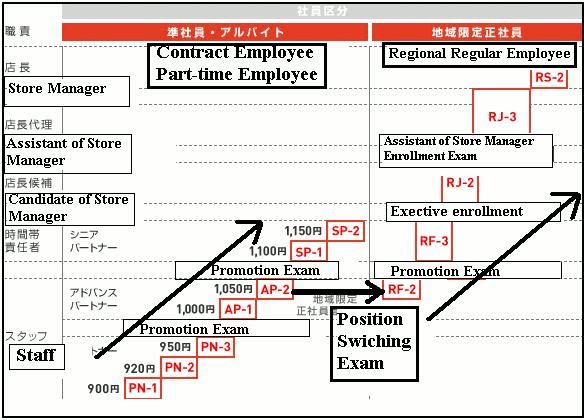 This is the second installment of an article series looking into Unqlo’s CSR track record, and specifically into the reasons as to why they want to do business with Grameen. (Read Part 1, Part 3, Part 4, Part 5, Part 6 and Part 7.
This is the second installment of an article series looking into Unqlo’s CSR track record, and specifically into the reasons as to why they want to do business with Grameen. (Read Part 1, Part 3, Part 4, Part 5, Part 6 and Part 7.
—————————————–
Summary of previous posts:
Uniqlo – Japan’s largest, most dynamic, and fastest growing clothing retail chain – is investing into Bangladesh, notably by striking up a joint venture with Grameen bank. The question is: Why would they do that? This series of posts is looking at Uniqlo’s global strategy, their CSR track record, and what we can learn from that about their motives for the joint venture.
There are two difficult to match aspects to Unqlo’s business ethics.
On the one hand, there are some apparent efforts to be a pace-maker in all things CSR in the Asia-Pacific region: They’ve launched an innovative (for what is Japan) employee hiring system; they make evident efforts to hire and integrate handicapped people into their work force; and their clothing recycling initiate is world-wide unheard of in its approach, scale and in the fact that they’ve set up a collaboration program with the United Nations High Commissioner for Refugees (UNHCR).
These efforts are particularly interesting to observe since Japan, or rather Asia at large, is lagging in this respect, and most CSR efforts are either exclusively focused on cost reductions or else are triggered by legislation. Examples are CO2 emissions, manufacturing waste, energy consumption etc. But let’s have a closer look at Uniqlo’s efforts, one by one.
Today’ Focus: Uniqlo’s employee hiring system.
In Japan, there exists a social divide between ‘regular employees’ and part-time and contract workers.
‘Regular employees’ are expected to work their way up the ranks of the company over the years. They receive pension and health-care benefits, a bi-annual bonus, and a – relative to the other two categories – higher salaries. On the back-side,over-time is not being paid, and they potentially could be transferred at any given time, within the country or even abroad, and had no word in the decision.
Part-time and contract workers have none of these benefits, and neither any of the drawbacks: They earn a lower salary and are the first to be laid off, but they remain geographically steady and are paid by the hour.
The system works due to the fact that in the aftermath of the burst of the economic bubble in the early 1990s, jobs were scarce, and many university graduates could not find a job after graduating. It being Japan, this effectively meant, that they had missed the entry point to their professional careers entirely. Yet – they had to survive , and so a whole generational workforce of cheap, well-qualified, overly flexible workers came into being, always ready to cover up for any extra hands needed.
Up until April 2007, Uniqlo had 20’000 such part-time or contract workers on their books. 5’000 of which qualified up front to be promoted to “regular employees”. The first message behind this was clear: A full quarter of the company’s ‘flexible’ work-force fund themselves in reality already in positions with the same duties and responsibilities the ‘regulars’, only with less pay and job security. The second, and a subtle, yet loud message to the market was: Uniqlo is just one player amongst many in the country. If this was the situation at Uniqlo, then it probably is the standard case rather than the exception.
A second step that the company took, was the introduction of a new “regional regular employee” status, designed to regulate the situation of contract workers working more than 40 hours a week (i.e. full-time) and that off long-standing part-time workers. In this schema, the status of the worker would be essentially that of a normal “regular employee”, although the employee would not be expected to move around the country for the company. Due to this guarantee of location, the employee would receive a slightly lower pay than a national “regular employee”.
From the 20’000 ‘flexible’ workers in Japan on Uniqlo’s books as of April 1st 2007, yet another 5’000 qualified this status.
The result at the the bottom line line hence is: Uniqlo regularised the situation of half of its irregular work-force – a staggering figure considering the the size of the company. The remaining 10’000 workers , each individual case had been reviewed, had been proven to either only having recently joint the company, or be working only very limited hours.

Image: Details of Uniqlos new hiring system (Source):
Contract Employee: Regular part-time employee, non-permanent employees.
Part-time Employee: Work as a short-time employee.
Regional Regular Employee: Regular employees who are employed in a specific region of their choice.
The message and impact on the market as well as Uniqlo’s reputation and financial bottom line was rather impressive. Fiscal year 2007 (April 2007 ~ April 2008), the one immediately following the year the staff situation had been reviewed and regularised, was one of the best in in the company’s history – despite the additional cost burden caused by the higher salaries of the new ‘regulars’. But beyond financial bottom line, the strategic move brought only positive press comments, AND took the already ongoing national political discussion about existing labour laws and the social problems associated with them, to entirely new dimensions.
In the next installment, I will have a closer look at Unqilo’s CSR track record in ‘Diversity & Inclusion’
—————————————–
This is the second installment of an article series looking into Unqlo’s CSR track record, and specifically into the reasons as to why they want to do business with Grameen. (Read Part 1, Part 3, Part 4, Part 5, Part 6 and Part 7.

